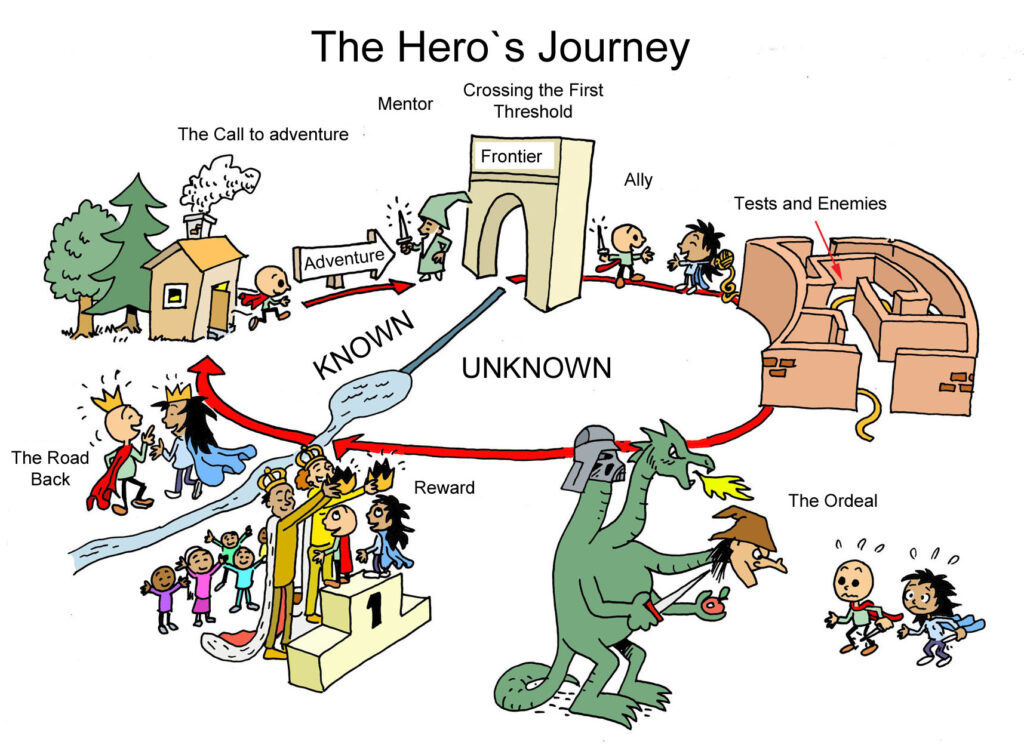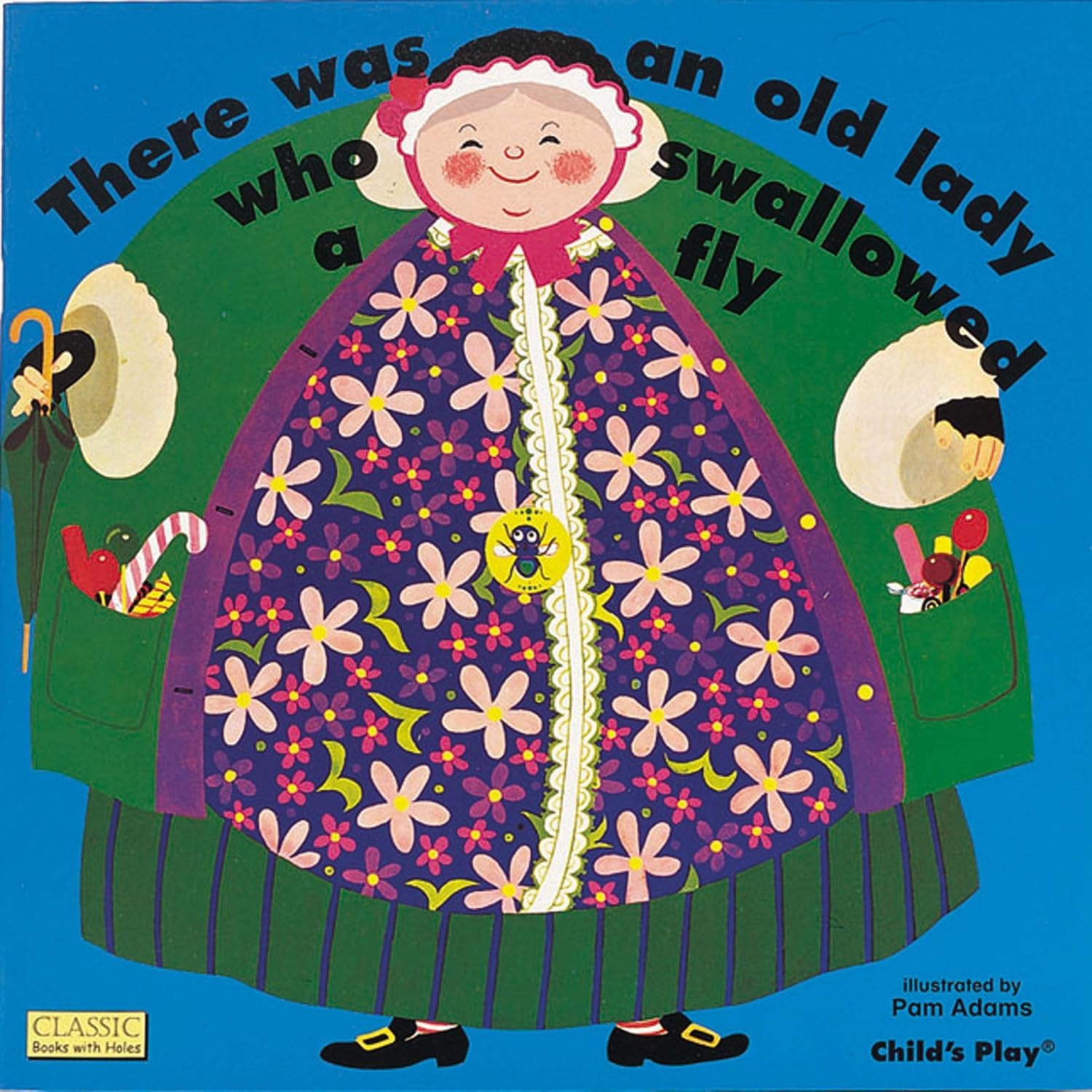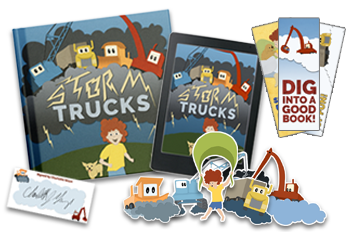
Ever wondered how your favorite picture book was created? It all starts with a great story. Today, I’ll show you how to write yours!
First off, start with an amazing idea for your story.
Now take your idea and let’s discover how to write it! There are a lot of things to think about when you start your story, such as Point of View, Plot Structure, Setting, Characters, Voice, Word Choice, and Emotional Impact. Let’s go through them together.
Point of View
So, you’ve got this incredible story idea, but who’s going to tell it? The point of view is the lens through which your readers will experience your story, and it’s the first major decision you need to make.
There are three different point of views in writing.
First-person means writing from inside the mind of one person, using pronouns such as I, ME, WE, and US. The picture book: “The Bad Seed” by Jory John is an example of first person storytelling.
Second-person means writing speaking directly to the reader, using the pronoun YOU. A picture book written in second-person would be “How To Babysit a Grandpa” by Jean Reagan
Third-person point of view is the most common for picture books. This point of view is more distant because the narrator is not a part of the book and doesn’t speak directly to the reader. In this point of view, the pronouns used are HE, SHE, and THEY. An example of third-person point of view in a picture book would be “Grumpy Monkey” by Suzanne Lang.
In my first draft of Storm Trucks, I wrote the story in 1st person. Later, as I edited the story, I found that 3rd person worked much better for my story.
Now that we’ve explored who’s telling your story, let’s talk about what happens in it.



Plot
 The plot is the backbone of your story, and there are different structures you can use to bring your idea to life.
The plot is the backbone of your story, and there are different structures you can use to bring your idea to life.
A very basic story plot (taken from “Invisible Ink: A Practical Guide to Building Stories that Resonate” by Brian McDonald is as follows:
- Once upon a time…
- And every day…
- Until one day…
- And because of this…
- And because of this…
- Until finally…
- And ever since that day…
I love the simplicity and accuracy of this breakdown of story. It works for any kind of story, from short to epic.
A famous plot type is the hero’s journey. The main character has life one way, then there’s a problem that forces them to change something in order to solve it, they try and fail multiple times making choices that bring them to a point where things cannot go back to how they were at the beginning, it looks like they will never succeed, then they try one last time and succeed. The story ends with the main character in the new normal that came after this crisis.

An example of the Hero’s Journey plot line in a picture book is “Journey” by Aaron Becker. While completely wordless, his pictures show the standard Hero’s Journey of a child discovering a new world, facing challenges, growing and changing, and returning home changed.
Another type of picture book plot is the Circular plot. These take the reader on a journey and return to the starting point again. An example of these types of stories is found in the “If You Give A Mouse A Cookie” series of books by Laura Numeroff.


Styles of Picture Books
Now let’s look at some other styles of picture books:
There’s the LIST, such as “17 Things I’m Not Allowed to Do Anymore” by Jenny Offill
There’s the HOW-TO Guide, such as “How to Read a Story” by Kate Messner
Another type is the CUMULATIVE story, where one thing leads to another. You’ll be familiar with this type of story from an example like “There Was An Old Lady Who Swallowed a Fly” this version is from Pam Adams.
Some stories are DIALOGUE-DRIVEN stories, such as “Alma” by Juana Martinez-Neal.
Some are POEMS, such as “Ohana Means Family” by Ilima Loomis, which is also a CUMULATIVE story.
Another plot style you could try is using DIFFERENT VIEWPOINTS or EPISTOLARY, like in “The Day the Crayons Quit” by Drew Daywalt.
A great way to get a feel for different plots and styles of picture books is to read a lot of them. A lot a lot. Soon you will see the patterns and repetitions in the story arcs and the styles of the stories.






The Setting
With your plot taking shape, it’s time to think about where your story unfolds. The setting can add depth and context to your story, bringing your readers into the story. This is something you can play with after you have your original idea, it’s a great move to try out that idea in a few different settings. Would this story be better in the city, or the country, or the wilderness? What about changing the time period? Could you set it in the past or the future?
For my story, I needed there to be a thunderstorm. In my first drafts, my story took place inside, but as I refined, I started the story outside on a farm with a large open space to see the storm clouds coming from far away. Later, my main character, Axel, runs inside his house, and at the end returns to the outdoors.
Characters
Once your world is built, it’s time to fill it with characters. Who will your readers be rooting for? Would this story work better with human characters… or animals… or aliens? What about inanimate objects that could be characters? In picture books a character could be anything from a rock, to a crayon, to a planet… or a person. A character could still be a person.
In my story, there is a child character, a dog, and four truck characters. I originally had more characters, but removed them as the story was edited.
Voice and Word Choice
With your characters in place, the next step is to find your story’s voice. How do your characters speak, and how does your narrative sound? Your voice will set the tone for the entire book. Voice also involves word choice. You have decisions to make about how serious or silly your story is written. You also get to decide whether to write in poetry or prose.
There is a lot of literary agents who say they don’t want rhyming picture books… the truth is, the best selling picture books are rhyming ones, but to sell a picture book written in rhyme, the rhymes have to be perfect.
Another tip for word choice is to remember all you ever learned in English class: alliteration, imagery, idioms, onomatopoeia, and using active verbs. Use exciting and fun to say out-loud words. When you are using so few words for a picture book, every word is important and needs to be as perfect as you can make it. Also, since a picture book is almost always read out loud, do that yourself as you work. See how the words sound and if they flow well together.
Emotional Impact
Finally, let’s talk about how your story makes readers feel. Emotional impact is what makes a story memorable. Whether you want your readers to laugh or cry, work at crafting a story with an emotional punch. Your emotional impact needs to be woven through all the areas: plot, word choice, voice, imagery, setting and pacing.
Conclusion
We’ve covered a lot today—point of view, plot, setting, characters, voice, word choice, and emotional impact. Each of these elements plays a crucial role in bringing your story to life. Each of these needs an in-depth article of its own. One organization I have found really helpful in my learning process is SCBWI – The Society of Children’s Book Writers and Illustrators. My local branch of SCBWI has been instrumental in helping me grow as an artist and writer.
Storm Trucks Available Now
My book, Storm Trucks, is available to pre-order through Kickstarter right now as a beautifully printed hardback - and there are bonus items available to go with it: bookmarks, stickers, and an ebook version. The link is below so you can see all the goodies and be part of making this book a reality!




0 Comments